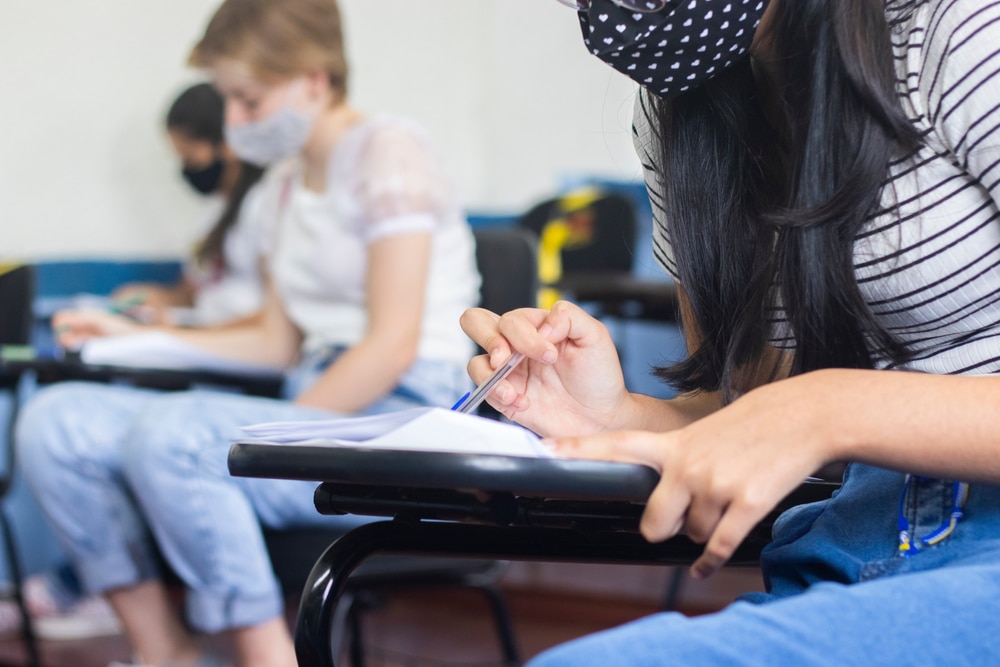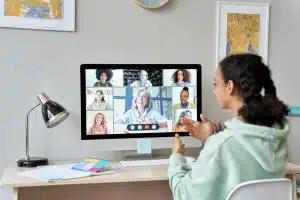How Has COVID Affected College Admissions?
Institutions are grappling with seismic changes in the wake of a global crisis. One area that has seen monumental shifts is college admissions. COVID-19 has ushered in new standards by bursting the traditional bubble, leaving stakeholders maneuvering through a novel landscape.
Understanding the Shift in College Admissions
The pandemic has fundamentally altered the path to higher education from selective processes to open enrollment. The shift, however, is not devoid of challenges. We must delve into the immediate and prospective effects on admissions to comprehend these changes entirely.
The Immediate Effects of the Pandemic on Admissions
Referred to as an unprecedented event, the pandemic’s immediate impact on college admissions manifested in many ways. Among the significant changes was the switch to remote learning. Universities scrambled to create online platforms for students who could not physically attend lectures.
This sudden transition to online learning brought about a myriad of challenges. Professors had to quickly adapt their teaching methods to engage students through screens, while students had to navigate the complexities of virtual classrooms. The lack of face-to-face interaction posed obstacles in building relationships with professors and classmates, leading to isolation and disconnection.
Furthermore, the sudden shift to remote learning highlighted the digital divide among students. Not all students had access to reliable internet connections or the necessary technology to participate fully in online classes. This disparity further exacerbated existing educational inequalities, making it even more challenging for some students to pursue higher education.
This was followed by another significant alteration: changing application deadlines. With the onset of the pandemic, a window of uncertainty opened. As a result, many universities extended their admission deadlines, offering a safety cushion to students navigating these uncertain waters.
Long-term Implications for Prospective Students
While the immediate consequences were evident, COVID-19 has, without doubt, more extended ramifications for prospective students. Besides the compute-intensive online learning, the pandemic has etched more profound effects that will impact future admissions. High school students face an uncertain future with disruptions in standardized testing and the transition to online college tours.
Standardized testing, such as the SAT and ACT, has long been crucial to college admissions. However, the pandemic forced the cancellation or postponement of many test dates, leaving students with limited opportunities to showcase their academic abilities. This disruption has sparked debates about the relevance and fairness of standardized testing, leading some colleges to adopt test-optional policies or explore alternative assessment methods.
Additionally, the transition to online college tours has changed how prospective students explore campuses. Traditionally, campus visits offered a chance to experience the atmosphere, interact with current students, and get a feel for the overall culture of the institution.
However, with travel and in-person gatherings limitations, students have had to rely on virtual tours and online information sessions. While these alternatives provide some insight, they cannot fully replicate the immersive experience of being physically present on campus.
Moreover, financial concerns weigh significantly on the minds of students and their families. Many are struggling with the economic fallout of the pandemic, leading to increased demands for financial aid and rethinking the expensive traditional college experience.
The rising cost of tuition, coupled with the uncertainty of job prospects after graduation, has caused prospective students to reconsider their options and explore more affordable alternatives, such as community colleges or online degree programs.
Changes in Standardized Testing Requirements
The pandemic represents more than a health crisis; it’s a critical junction in higher education, particularly concerning standardized testing requirements. The impact of COVID-19 has forced universities and colleges to reevaluate their admissions processes and make significant changes to accommodate the challenges faced by students worldwide.
The Move Towards Test-Optional Policies
In response to disruptions caused by COVID-19, many institutions have started adopting test-optional policies. With SAT and ACTs canceled or postponed, students faced difficulty meeting traditional testing requirements. As a result, universities loosening their policies enabled a wider swath of students to consider tertiary education sans the stress of standardized tests.
This step unraveled a debate on the relevance of such standardized tests. Advocates for equality in education celebrated it as an invitation to diversity, enabling merit-based selection rather than exam-oriented filtration. It remains a wait-and-watch scenario on whether institutions will continue such a policy post-pandemic.
Moreover, the move towards test-optional policies has sparked discussions on the impact of standardized testing on students’ mental health. The pressure to perform well in these exams often takes a toll on students, causing anxiety and stress. By eliminating the standardized test requirement, universities acknowledge the need for a more holistic approach to admissions, focusing on students’ overall achievements and potential.
Impact on International Student Admissions
With standardized tests shelved and travel restrictions in place, international student admissions were significantly impacted. The fact that many international exams could not be conducted digitally further complicated matters. While universities are introducing measures to mitigate the impact and continue attracting international students, it’s not without hurdles.
Easing admissions requirements, offering remote learning options, and providing support to those affected by travel restrictions are ways in which universities are trying to adapt. However, the path to recovery might be long and winding. International students play a vital role in fostering cultural exchange and diversity on campuses, and their absence during the pandemic has left a void that universities are actively working to fill.
Furthermore, the pandemic has highlighted the importance of virtual communication and collaboration. Universities are exploring innovative ways to connect with prospective international students through virtual tours, online information sessions, and virtual student fairs. These initiatives aim to give international students a glimpse into campus life and academic programs despite the physical limitations imposed by the pandemic.
Additionally, the pandemic has prompted universities to reassess their scholarship and financial aid programs for international students. Recognizing many families’ economic hardships, institutions strive to provide increased support and flexibility to ensure deserving students can still pursue their education abroad.
The Transition to Virtual Campus Tours and Interviews
The pandemic-induced transition wasn’t limited to learning and testing. Universities turned to technology to recreate the experience of campus tours and student interviews.
Adapting to a New Reality: Virtual Campus Tours
Virtual tours have become the new normal for prospective students. Many colleges quickly adapted to this model, even incorporating live Q&A sessions with current students or faculty. Though not a perfect substitute for physically experiencing campus life, these virtual tours offered the chance to explore universities in a previously non-existent way.
Imagine sitting in the comfort of your home with a cup of coffee as you embark on a virtual journey through the hallowed halls of prestigious universities. With just a few clicks, you can navigate through lush green campuses, marvel at the architectural wonders, and glimpse the vibrant student life that awaits you. The convenience and accessibility of virtual tours have opened doors for students who may not have had the means or opportunity to visit campuses in person.
Equally engaging as walking down the paths and looking up to the grand buildings, virtual tours offered convenience and a unique perspective. As you explore each corner of the campus, you can pause and zoom in to examine the intricate details of historical landmarks or click on information icons to learn more about specific programs or facilities. It’s like having a personal tour guide at your fingertips, ready to answer any questions.
The Pros and Cons of Online Interviews
Online interviews have become as ubiquitous as online classes. While they allowed colleges to maintain admission processes through the pandemic, they came with upsides and downsides.
Picture yourself sitting in front of your computer, dressed in your best attire, ready to make a lasting impression on the admissions committee. Online interviews brought new flexibility and accessibility to the application process.
No concerns over travel or accommodation made these interviews practical and cost-effective. Students from all corners of the world could now showcase their talents and aspirations without distance barriers.
However, the lack of personal interaction challenged both parties to build rapport and truly glean a sense of each other. A firm handshake, a warm smile, or the subtle nuances of body language are all elements that contribute to the chemistry between an applicant and an interviewer. These cues are often lost in the virtual realm, making it harder to establish a genuine connection.
Despite the challenges, online interviews have forced applicants and interviewers to adapt and find innovative ways to convey their personalities and qualifications. From creating visually appealing backgrounds to mastering the art of virtual eye contact, students have had to navigate a new set of interview skills. Similarly, interviewers have had to fine-tune their ability to read between the lines and assess a candidate’s potential beyond the limitations of a screen.
Financial Implications for Students and Institutions
The financial ramifications of the pandemic are far-reaching, affecting both students and institutions.
The Increase in Need-Based Financial Aid Requests
Pandemic-induced job losses and layoffs resulted in a surge of need-based financial aid requests. Institutions have to grapple with increasing demands, creating a precarious situation as they balance their students’ needs and their institutions’ economic health.
This push for more aid, paired with an uncertain economic outlook, has made financial planning for schooling a challenging task. Students and families are therefore encouraged to research options meticulously and plan carefully.
The Financial Strain on Universities and Colleges
Colleges and universities face financial pressure as they strive to meet the increased demand for financial aid. The lack of room and board payments, fewer international enrollees, and the costs associated with transitioning to online teaching have added to the financial strain on these institutions.
To combat these challenges, institutions have had to optimize their spending and seek alternate revenue channels while aiming to provide quality education to their students.
How Has the Pandemic Affected Gap Years?
In a world turned upside-down by the pandemic, the traditional pathways to higher education have been disrupted, leading many to reconsider their immediate futures. One of the most striking shifts has been in gap years.
Historically, gap years have been seen as a luxury or an alternative route, often filled with travel, internships, or volunteer opportunities. However, the pandemic has transformed this once-optional year into a strategic move for many.
With the uncertainty surrounding in-person classes, extracurricular activities, and even the stability of campus life, many students opt for a gap year to avoid a diluted college experience. This trend is not merely anecdotal; colleges report higher deferral rates, indicating a seismic shift in how COVID-19 affected college admissions and the traditional timeline to college entry.
The Rise in Gap Years
The surge in gap years is not just a knee-jerk reaction to the pandemic but a calculated decision influenced by many factors. For starters, the limitations on international travel have made studying abroad less appealing, if not impossible, for some.
Additionally, the economic downturn has led families to reconsider the financial feasibility of college, making a gap year an attractive option to save money and reassess options. While a necessary adaptation, online learning has also received mixed reviews, causing students to question the value of a remote college experience.
Educational consultants and college counselors have noted this uptick, confirming that the question is no longer “Should I consider a gap year?” but rather “Why shouldn’t I?” This shift in perspective is another way how COVID-19 affected college admissions, forcing institutions to adapt their enrollment strategies and expectations.
The Pros and Cons
While taking a gap year amid a pandemic offers a reprieve from the uncertainties plaguing higher education, it’s not without its challenges. On the positive side, a gap year can give students the time to gain real-world experience through work, volunteering, or self-directed learning.
This can make them more attractive candidates when they apply and offer a clearer sense of direction for their academic and career goals. However, there are downsides. The most obvious is the limitation on what one can do during a gap year in a pandemic-ridden world.
Travel is restricted, and many traditional gap year programs have been suspended. Academic atrophy is also risky; some students may struggle to transition back into academic life without a formal education structure. Understanding the pros and cons of taking a gap year is crucial for students and parents, adding another layer to how COVID-19 affected college admissions.
What Are Colleges Looking for Now?
Gone are the days when a high SAT score and a laundry list of extracurriculars could secure a spot at a top-tier institution. The pandemic has compelled admissions offices to reevaluate their criteria, focusing more on holistic aspects of an applicant.
Qualities like resilience, adaptability, and a demonstrated commitment to community have taken center stage. Colleges believe these attributes are more than just buzzwords but tangible qualities that contribute to a diverse and dynamic learning environment.
This shift directly addresses how COVID-19 affected college admissions, forcing institutions to adapt to new challenges and uncertainties.
Shift in Admissions Criteria
The criteria for college admissions have undergone a significant transformation, and it’s not just about being test-optional. Admissions officers are now emphasizing essays, letters of recommendation, and the “Additional Information” section of applications. Why? Because these elements offer a window into how a student navigated the pandemic’s challenges.
Have they shown empathy? Have they been resourceful or innovative in a time of crisis? These are questions that are increasingly shaping the admissions process. Moreover, extracurricular activities are being viewed through a new lens.
Traditional sports and club leadership activities have been disrupted, leading colleges to value unconventional but meaningful engagements, such as community service or personal projects. This nuanced approach is another facet of how COVID-19 affected college admissions, requiring students to be more reflective and authentic in their applications.
The Importance of “Fit”
In this evolving landscape, the concept of “fit” has gained unprecedented importance. Colleges are not just looking for high achievers but students who will contribute positively to their campus culture.
This means that your personal statement, interviews, and social media presence are under scrutiny like never before. Institutions are keen to admit students who align with their values, mission, and vision for the future.
This focus on fit is not merely a trend but a long-term shift influenced by the pandemic’s impact on mental health, community engagement, and educational equity. As students and parents navigate this complex and ever-changing admissions landscape, understanding the importance of fit is crucial.
It adds another layer to the intricate puzzle of how COVID-19 affected college admissions. It emphasizes that getting into college is about meeting criteria and building a mutually beneficial relationship with the institution.
Ready to Navigate the New Normal in College Admissions?
The landscape of college admissions is more complex than ever, thanks to the far-reaching impacts of the pandemic. From shifting admissions criteria to the increasing importance of “fit,” it’s clear that the old rulebook has been rewritten. So, how do you navigate this new terrain to secure a spot at your dream college? Don’t go it alone—AdmissionSight is here to guide you every step of the way.
We specialize in helping students adapt to the changing dynamics of college admissions. Our team of experts stays ahead of the curve, understanding how COVID-19 affected college admissions and what it means for you. From personalized essay coaching to strategic extracurricular planning, we offer a holistic approach tailored to the unique challenges of today’s admissions process.
Take the first step towards your future and schedule a free consultation with AdmissionSight today.










































